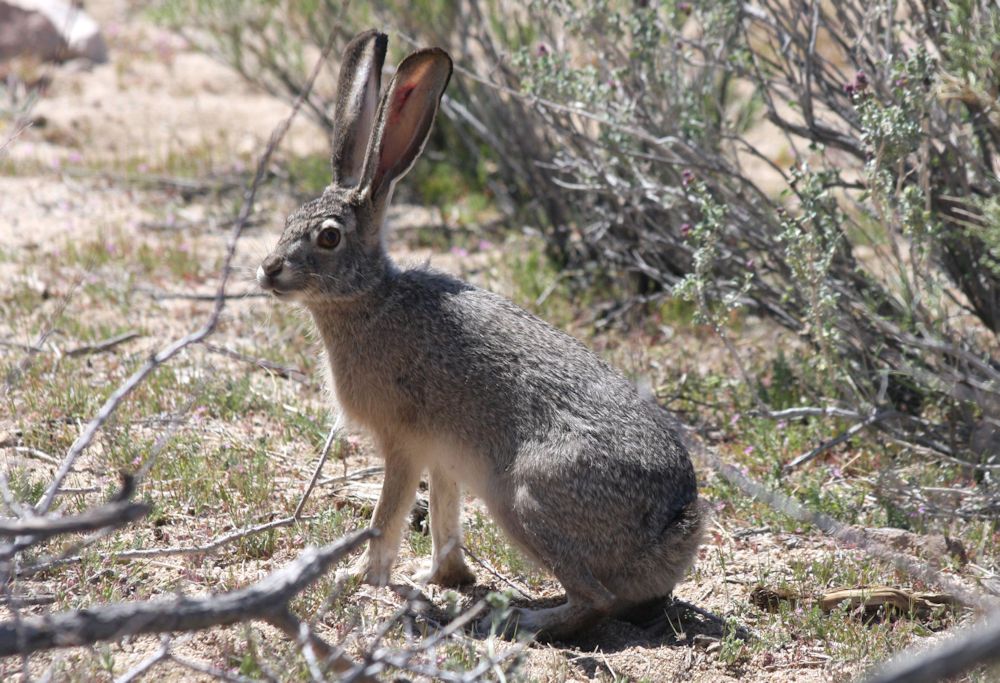Rabbits and Hares
Description
Buffy gray or sandy above, peppered with black; white below. Tail has black stripe above, extending onto rump, with white border. Very long ears brownish with black tips. Very large hindfoot. L 18 1/4–25" (465–630 mm); T 2–4 3/8" (50–112 mm); HF 4 3/8"–5 3/4" (112–145 mm); E 3 7/8–5 1/8" (99–131 mm); Wt 4–8 lb (1.8–3.6 kg).
Similar Species
White-tailed Jackrabbit lacks black on top of tail. Antelope Jackrabbit has white lower sides; lacks black on ears.
Breeding
1–4 litters per year, each of 1–8 young (usually 2–4); births are year-round, but more frequent in milder weather. Gestation 41–47 days.
Range
Western U.S., from sc Washington south to California, east to Nebraska, w Missouri, and Texas. Introduced in New Jersey and Kentucky.
Discussion
This most abundant and widespread jack was originally called a "jackass rabbit," after its very large ears. Like other jacks, it is not really a rabbit but a hare, as its young are born well furred and with their eyes open. By day, it generally rests in dense vegetation or in a form, becoming active in late afternoon. Somewhat social, it often feeds in loose groups. In summer, it eats many kinds of plants, favoring alfalfa when available; in winter, it depends on woody and dried vegetation. When alarmed, it remains very still, but may move its ears to catch sounds. It rarely walks, but hops 5 to 10 feet (1.5–3 m) at a time, up to 20 feet (6 m) when panicked, and reaches speeds of 30 to 35 mph (50–55 km/h) over short distances. When it runs at moderate speeds, every fourth or fifth leap is exceptionally high, allowing it a better view of surroundings or a pursuing predator; at top speed there are no such special jumps. When escaping from a predator, it flashes the white underside of its tail, perhaps alerting other jacks to danger and confusing its enemy. After fleeing a short distance, it stops and looks back, evidently to see if it is still being pursued, and may then give a danger signal by thumping its hindfeet. It can swim, dog-paddling with all four feet. The young are born in a relatively deep form lined with hair from the mother’s breast. The mother then places them in separate forms, thus decreasing a predator’s chance of taking her entire litter. To avoid attracting attention, she keeps her distance by day but comes several times a night to nurse. The young can fend for themselves in less than a month. Generally silent, these hares can squeal and give distinctive calls when fighting or distressed and when assembling their young. Coyotes, Bobcats, foxes, hawks, owls, and snakes are predators.




